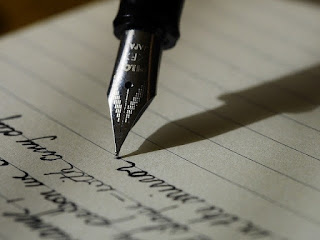I've been blogging for over seven years, mostly about how to write in a more literary fashion.Tropes are everywhere in writing. In fact, a trope is a building block of writing. Any figure of speech can be called a trope. But when one thinks of a trope in a story, movie, or play, one thinks of a building block of a story such as a character or event in a story. Every story uses tropes.
Even when one tries not to use tropes, it's practically impossible. There's even a trope for stories that are striving to be tropeless. It's impossible to avoid troping in a story. When one thinks of a character trope, one thinks of a type of character or plot device, the antihero, the plucky heroine, the sidekick, the man vs nature story structure, etc. However, what is possible is avoiding cliches with those tropes. For most people, the first idea is usually the cliche. If one pushes beyond that, that's where fresh stories begin.
There are so many tropes that it's impossible to count and it all depends on the definition of a trope. But even if one focuses on character tropes, it would take a very long time to name all the available tropes. One can easily google them online. What it comes down to is that almost every character you will read about or see falls into one trope or another. The best books, literary or otherwise, don't simply plug in a trope and call it good. Authors of good books use tropes as a start but not an end.
One of the main differences between good literature and simplistic stories is how much work the author puts into making the trope their own, making it something fresh. It's not enough to write about a simple princess in a tower, a damsel in distress waiting for her simplistic prince to come and save her as a dragon prowls its base. What makes her unique? How is he more than he seems?
And, often better yet, how can the author flip the trope to make it something that feels new and fresh in order to stand out from the pack? One can simply flip the trope in the obvious way and have the damsel save the prince. One can have a prince or princess save the dragon or the dragon save one of the others.
Any of these can work, but you can push a trope further. Maybe the "princess" is actually a cowgirl, and the "prince" is a rancher in modern or period days, and the tower and/or dragon is metaphorical. Or maybe a literal dragon shows up in the wild West. Maybe the princess has sci-fi tech and has to steal the tower to take it somewhere to save her kingdom, fighting the mage prince and his training master, the queen of dragons, in order to do so. Maybe the tower, itself, has to fight the other three off to save itself. Who is the bad guy? Who is the good? Or are they all morally gray? Or perhaps anybody winning means the end of the world.
Think through your stories. Are you relying on simple tropes? Do you have a story that would benefit from pushing that trope and turning it into something fresh? If you use simple tropes, how can you make them unique?



















































